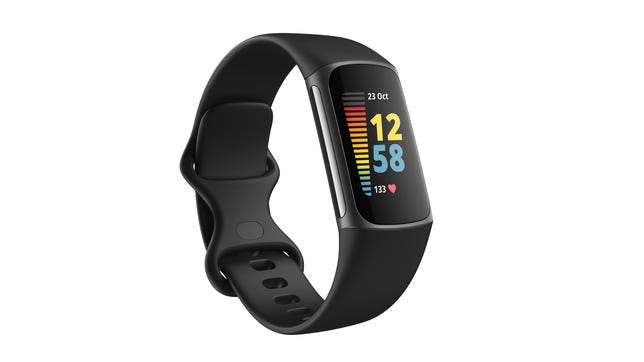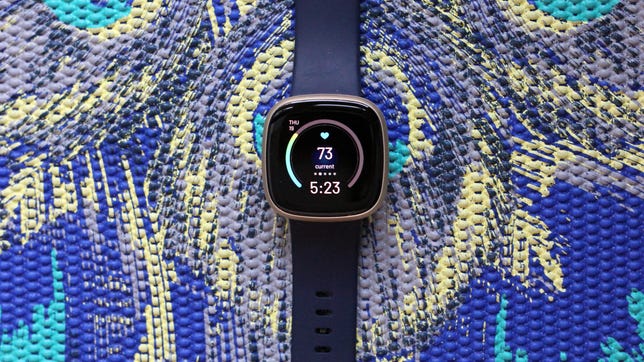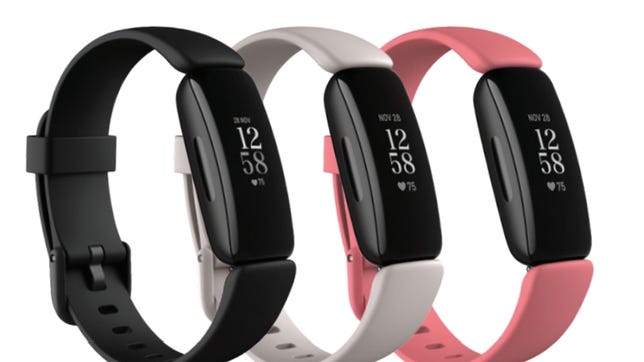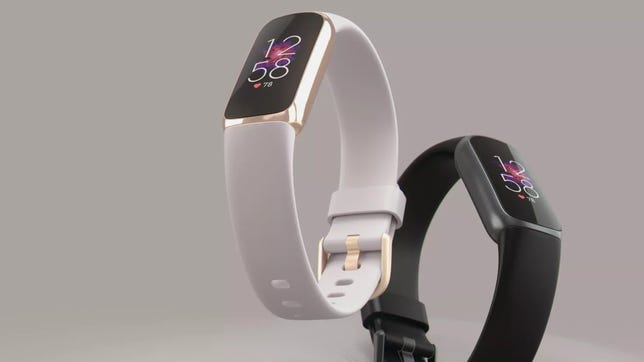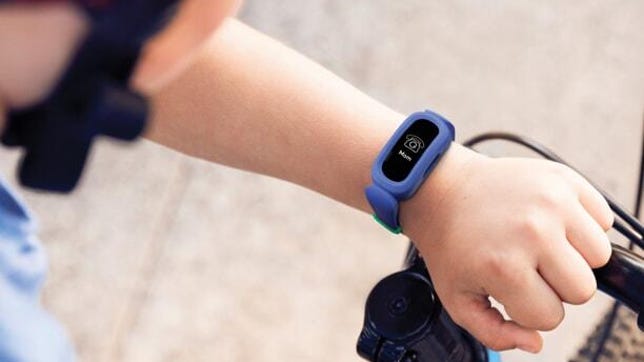Technologies
5 Best Fitbits for 2023: Top Fitness Trackers
How to find the right Fitbit for you.

Fitbit is the go-to brand when it comes to fitness wearables. That’s for good reason: It offers high-quality products at different price points, ranging from budget to premium options. When looking for the best fitness trackers around, it doesn’t matter if you’re a serious workout enthusiast or someone who simply wants to track their physical activity. Fitbit has you covered. We’ve tested out every Fitbit on the market to help you decide which is best for your lifestyle.
CNET’s reviews of Fitbit, the Google-owned brand that’s got so many people excited about tracking their steps, consider features like sleep tracking, activity tracking; heart-rate monitoring; heart rate tracking; and stress tracking. There are even workouts available in the Fitbit app when you invest in an optional Premium membership. Whether you’re shopping for gifts or just perusing the different Fitbit devices out there, here’s a roundup of the best Fitbits available right now.
Fitbit
If you’re looking for a fitness tracker that offers the best available features for collecting health data, while also being comfortable, easy to use (no buttons) and easy to read outside in the sunshine — all at a reasonable price — Fitbit’s Charge 5 wins. In fact, the Charge 5 was recently awarded a CNET’s Editors’ Choice Award.
The Charge 5 tracks things such as your heart rate through an EKG reading app, your stress level through an electrodermal activity sensor, and your blood oxygen level and skin temperature. It also tracks your sleep patterns, including breathing rates, sleep stages and restlessness. The Charge 5 monitors over 20 different physical activities, including swimming (it’s water-resistant), yoga and cycling. It also has a built-in GPS, which is great for runners and has 20 exercise modes.
The Charge 5 is compatible with iPhones and Androids. However, iPhone users can only see notifications on the Charge 5 screen, while Android users may send quick replies.
Vanessa Hand Orellana/CNET
The Versa 3 is a Fitbit smartwatch that combines the best features of the Charge 5 tracker with the «taking calls on your wrist» aspect of a smartwatch rather than purely a fitness tracker. Although Fitbit’s best smartwatch and best Apple Watch alternative may not be quite as smart as its Apple or Galaxy Watch competitors, it is compatible with both Apple and Android operating systems, and can also be paired with either Alexa or Google Assistant. One of the best features of the Versa 3 is its strong battery life — up to six days without the «always on» display and with moderate use. (The Apple Watch, for comparison, has a less-than-ideal battery life of a day and a half.)
The more expensive Fitbit Sense provides more health data, but the relevance of all the data Sense gives you might be moot, depending on if you know how to read medical charts. You’ll save money and lose little by going for the Versa 3 smartwatch instead.
A note about Fitbit’s Premium subscription: For $10 a month or a one-time payment of $80 for a year, Fitbit’s Premium subscription can give you more insight into your sleep and stress patterns, as well as things such as guided meditation and workouts. The Versa 3 comes with a three-month trial of Premium, and the Charge 5 comes with a six-month period. To find out more about whether Fitbit Premium is worth it, check out this guide.
Fitbit Premium also includes what it calls a Daily Readiness Score, which is Fitbit’s assessment of whether you need to take it easy today or if you should push yourself based on your goals for the week. This is now available for some Fitbit models, including the Versa 3.
Screenshot by Sareena Dayaram/CNET
The Fitbit Inspire 2 is the cheapest device for adults, and it gets the job done. The «easy» Fitbit tracks health essentials that include Active Zone Minutes and heart rate. The Inspire 2 comes with a free yearlong premium subscription so you can unlock personalized health insights and programs to help you improve your nutrition, sleep and other aspects of health.
The Inspire 2 doesn’t have GPS, and it doesn’t include special features such as being able to measure your blood oxygen level, but this tracker is a great (and more affordable) introduction to fitness tracking if you or someone you know is interested in monitoring their health information. The Inspire 2’s included subscription to Fitbit Premium is also far more generous than other Fitbit models.
Fitbit
If you want to count your steps and look like you’re wearing jewelry instead of a fitness device, the Fitbit Luxe is for you. It offers many of the same features as other Fitbits, such as goal-based workouts, but it does so in a smaller and more fashionable form that might be best for smaller wrists. (The design in general is smaller, so the text on the watch’s screen may also be too small for some people to read.) You can also pick it up for $50 off at most retailers right now.
Aside from its sleeker appearance, the biggest difference between the Luxe and other models might be its focus on general wellness tracking over more specific health data. When the Luxe calculates your stress rate, for example, it uses activity levels, sleep and heart rate instead of an electrodermal activity sensor as seen in the Charge 5 and Sense.
Fitbit
This one is pretty simple: The Fitbit Ace 3 is specifically for kids to help track sleep and activity, two crucial things for young bodies. Goals can be set on the Ace 3 for active minutes as well as reminders for going to bed and staying active. For kids who have their own phone, the tracker can also deliver call notifications (you know, for when you forget to call Mom).
The Ace 3 comes in cosmic blue with green adjusters, black with red adjusters or a «Minions yellow» for kids who are fans of the goggle-eyed animated creatures.
Technologies
Want to Watch a Podcast? Netflix and Spotify Partner to Bring Video Podcasts to Streaming
Starting in early 2026, Netflix subscribers in the US will be able to watch select Spotify Studios and Ringer podcasts directly on the streaming platform.

Netflix and Spotify are teaming up to blur the line between streaming and podcasting. The two companies announced a new partnership that will bring a curated slate of Spotify’s top video podcasts, including shows from Spotify Studios and The Ringer, to Netflix starting in early 2026. The goal is to make popular podcasts as watchable as TV, expanding both services’ reach into sports, culture, lifestyle and true crime.
Don’t miss any of our unbiased tech content and lab-based reviews. Add CNET as a preferred Google source.
The deal marks Spotify’s most significant distribution push beyond its own platform, and for Netflix, it’s a new way to keep audiences engaged with talk-driven, low-cost programming. Early titles include The Bill Simmons Podcast, The Rewatchables, Dissect, Conspiracy Theories and Serial Killers, among others. You can find the complete list here.
More shows and genres are expected to be added over time.
Netflix says the partnership complements its library of documentaries and talk shows, offering «fresh voices and new perspectives.» Spotify, meanwhile, described it as «a new chapter for podcasting,» giving creators access to Netflix’s global audience while expanding discovery for listeners who prefer watching podcasts.
The rollout will begin in the US early next year, with additional markets to follow in 2026.
Technologies
Every Active Borderlands 4 SHiFT Code
It’s dangerous to explore Kairos without some legendary gear. These promo codes will unlock epic loot and vault hunter cosmetics in Borderlands 4.

The biggest looter shooter of the year, Borderlands 4, is out, and tons of players are already taking the fight to the Timekeeper on Kairos. If you want to put the beat down on someone strong enough to control time, then you’re going to need an arsenal of powerful weapons and equipment.
Luckily, developer Gearbox Software is willing to lend a helping hand. Instead of having to farm every piece of legendary equipment in-game, you can roll the dice on some loot with Golden Keys unlocked by SHiFT promo codes.
If you’re already swimming in more loot than you know what to do with, some SHiFT codes also unlock special cosmetic looks for your favorite vault hunters. Special in-game challenges have already unlocked promo codes for Amon, Rafa and Vex vault hunter skins, with a Harlowe skin unlocking soon. Here’s how to use the latest SHiFT codes in Borderlands 4.
All active SHiFT codes for Borderlands 4
You can hunt down SHiFT codes on social media, but we’ll keep all of the active promo codes in one place for ease of access.
Below, you’ll find a chart that contains every active SHiFT code for Borderlands 4, what it unlocks and its expiration date:
Active Borderlands 4 SHiFT codes
| Reward | SHiFT code | Expiration date |
|---|---|---|
| Golden Key | WZK3B-SHTHF-JZ59K-SBT3B-TWHXT | Oct. 19, 2025 |
| Vex Mass Market Appeal Skin | BZ6JJ-CB6CT-WXJJW-3TT3B-56FZ5 | Jan. 1, 2031 |
| Amon Cult Classic Skin | JZ6BJ-SBR5J-WF3BK-BT3BB-TX9HB | Dec. 31, 2030 |
| Rafa Savings Savior Skin | TZXT3-XJXCB-CXBJW-BTTJT-9SK6B | Dec. 31, 2030 |
| Break Free Cosmetics Pack | JS63J-JSCWJ-CFTBW-3TJ3J-WJS5R | Jan. 1, 2031 |
| Golden Key | T9RJB-BFKRR-3RBTW-B33TB-KCZB9 | No expiration |
How to redeem SHiFT codes for your Borderlands 4 account
While SHiFT codes are totally free rewards for you to accumulate, you must make a SHiFT account to input any active codes in-game.
SHiFT is a service that Gearbox integrates into its biggest games, and making an account unlocks forums and exclusive beta participation. It’s also necessary to create an account to turn in any promo codes, which is what most fans care about.
Once your account is created, you can enter your SHiFT codes in two separate places. Within your SHiFT account settings, you can find a Rewards tab with a field to enter any Borderlands promo codes. Once you enter the codes, any unlocked items will be added to your account the next time you open the game.
However, an easier way to input your SHiFT codes is within Borderlands 4 itself. Within the game’s pause menu, you can access a SHiFT. Select the Rewards tab from the resulting menu, input your codes, and the unlocked items will be immediately available on your save.
Where are SHiFT codes normally released?
SHiFT codes are released fairly frequently on Gearbox and Gearbox-affiliated social media channels. For the best chance at catching every new SHiFT code that gets released, you should follow Gearbox on X and on Facebook.
Gearbox CEO Randy Pitchford also releases promos on his X account, so if you’re brave enough to follow him despite his frequent outbursts toward fans you can find SHiFT codes there as well.
What are SHiFT codes?
SHiFT codes are promo codes that Gearbox occasionally releases that reward players with loot and cosmetics in Borderlands games. The main SHiFT code reward is a Golden Key, which opens the Golden Chest in most Borderlands hub areas.
But don’t spend them immediately — it’s worth saving your Golden Keys until you reach the level cap and are playing on the hardest difficulty, as the loot rewards will scale to your character accordingly. This is a great way to begin farming some endgame legendaries quickly and easily.
Technologies
Barack Obama Reveals He Only Plays This One Phone Game
No, it’s not Wordle or Connections, but you’ve almost certainly heard of it.

Many of us rely on our smartphones for entertainment as well as communication, playing New York Times games such as Wordle, Connections and Strands on our phones. (CNET has daily answers for those games, plus Connections: Sports Edition and the Mini Crossword, if you’re ever stumped.) Now, one very famous person recently revealed that he plays only one phone game — and it’s one you’ve likely heard of.
Don’t miss any of our unbiased tech content and lab-based reviews. Add CNET as a preferred Google source.
Former President Barack Obama appeared on the final episode of the podcast WTF with Marc Maronhttps://podcasts.apple.com/us/podcast/episode-1686-barack-obama/id329875043?i=1000731550704#link={%22linkText%22:%22final episode of the podcast WTF with Marc Maron%22,%22target%22:%22_blank%22,%22href%22:%22https://podcasts.apple.com/us/podcast/episode-1686-barack-obama/id329875043?i=1000731550704%22,%22role%22:%22standard%22,%22absolute%22:%22%22}on Monday. He revealed the only game he plays on his phone is Words With Friends.
Obama says he plays the word game to keep up his friendship with longtime White House photographer Pete Souza.
«I could be in the middle of negotiations on a nuclear treaty, and if that ping goes off, there’s a part of me that’s like, ‘I wonder what [word] he [Pete Souza] played,» Obama said.
Words With Friends is similar to, but not associated with, the world-building game Scrabble. It was released in 2009 and is owned by game company Zynga, and can be played on devices running iOS and Android. Players take turns creating words on a game board using their rack of seven letter tiles, trying to score as high as possible while using special bonus squares to double or triple their points. As of Tuesday, Words With Friends ranked No. 14 on the free Word Games list in the Apple App Store.
Obama did not share whether he or Souza tends to win the majority of the pair’s games.
-

 Technologies3 года ago
Technologies3 года agoTech Companies Need to Be Held Accountable for Security, Experts Say
-

 Technologies3 года ago
Technologies3 года agoBest Handheld Game Console in 2023
-

 Technologies3 года ago
Technologies3 года agoTighten Up Your VR Game With the Best Head Straps for Quest 2
-

 Technologies4 года ago
Technologies4 года agoVerum, Wickr and Threema: next generation secured messengers
-

 Technologies4 года ago
Technologies4 года agoGoogle to require vaccinations as Silicon Valley rethinks return-to-office policies
-

 Technologies4 года ago
Technologies4 года agoBlack Friday 2021: The best deals on TVs, headphones, kitchenware, and more
-

 Technologies4 года ago
Technologies4 года agoOlivia Harlan Dekker for Verum Messenger
-

 Technologies4 года ago
Technologies4 года agoiPhone 13 event: How to watch Apple’s big announcement tomorrow

